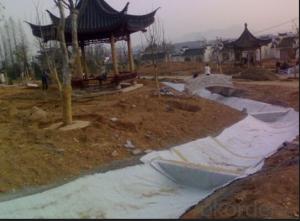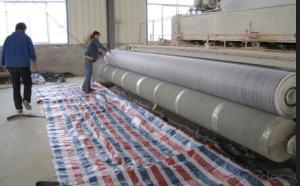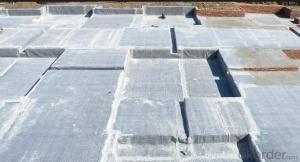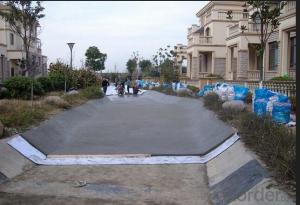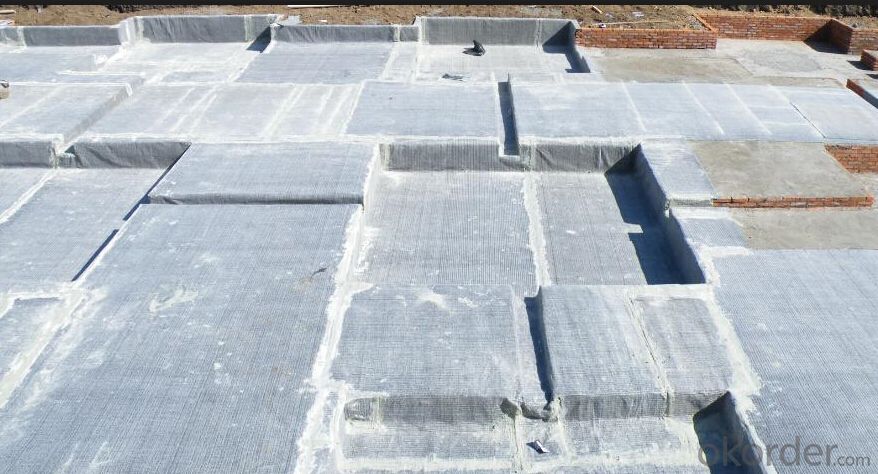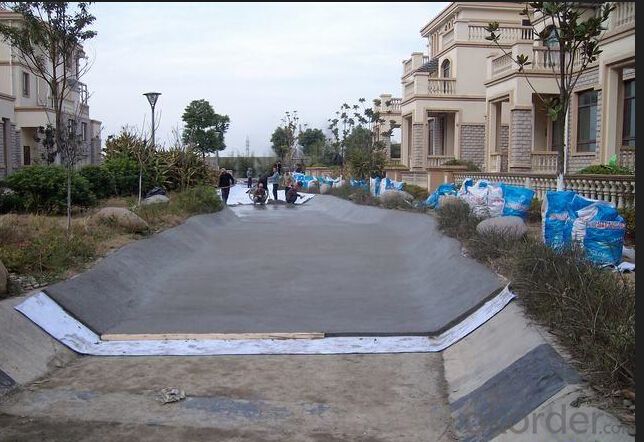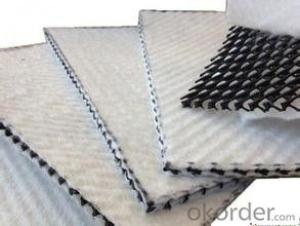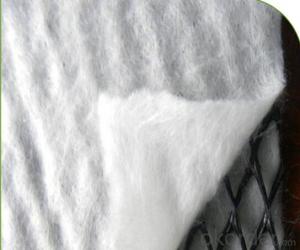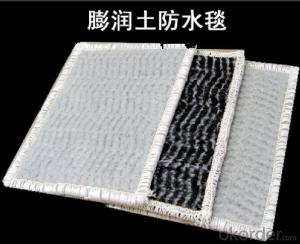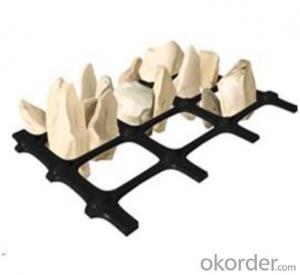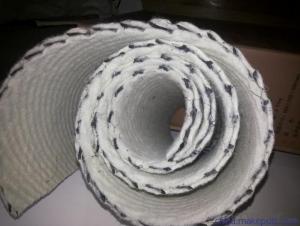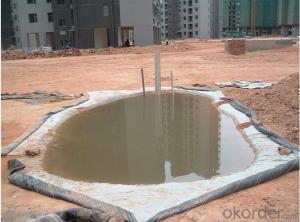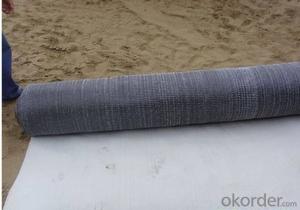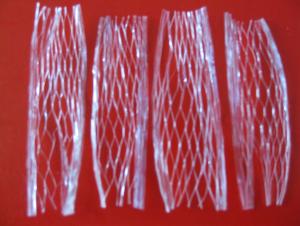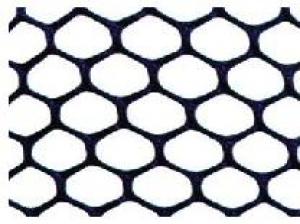Pond Liner Geosynthetic Clay Liner for Golf Course
- Loading Port:
- Qingdao
- Payment Terms:
- TT OR LC
- Min Order Qty:
- 5000 m²
- Supply Capability:
- 100000 m²/month
OKorder Service Pledge
OKorder Financial Service
You Might Also Like
Pond Liner Geosynthetic Clay Liner for Golf Course
1,Detail Introduction
Our GCL is composed of 3 layers, the upper layer is nonwoven geotextile, while the lower layer is woven geotextile, natural sodium bentonite fills the gap between geotextile layers. The application with natural sodium bentonite can enlong the using life of construction. Our GCL creates a new green and environmental building material.
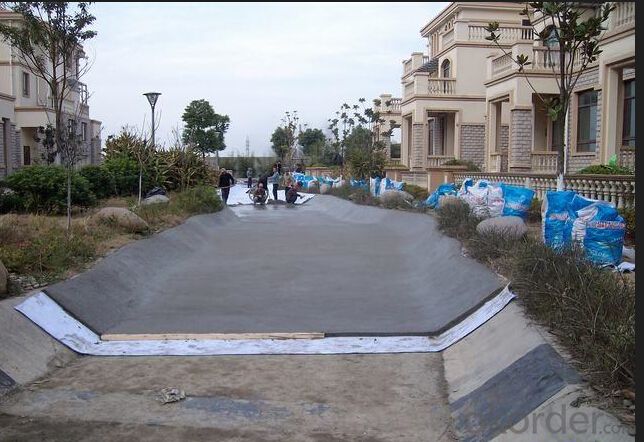
2,Feature OF GCL
(1) A permanent waterproof performance, and excellent water seepage performance, impermeability hydrostatic pressure up to 1.0MPa above, permeability coefficient 5 *10-9cm / s. Because the Department of Natural sodium bentonite inorganic materials, even after a long time or the surrounding environment changes, aging or corrosion does not occur.
(2) Has all the characteristics of geotextile material, such as separation, reinforcement, protection, filtration, simple construction and unrestricted construction environment temperature below 0 0 C also be construction. Just when construction GCL waterproof blanket tile on the floor, when the elevation or slope construction, with nails and washers to secure it, as required, can overlap.
(3) Easy to repair; Even after water (seepage) end of construction, such as waterproof layer accident damage, as long as the site of the damage to be a simple fix, can ever regain perfect waterproof performance.
(4)green: Bentonite is a natural inorganic material, harmless, non-toxic, no particular impact on the environment, with good environmental performance.
(5) simple construction period is short: and other waterproof materials, the construction is relatively simple, does not require heating and paste. Product width up to 6 meters, with international geotextile (film) to match the size, greatly improving the efficiency of construction.
(6) Integrated waterproof materials and objects: When sodium bentonite water, with 20-28 times the capacity expansion, even if the concrete structure vibration and settlement, bentonite GCL can repair cracks in the concrete surface less than 2mm.
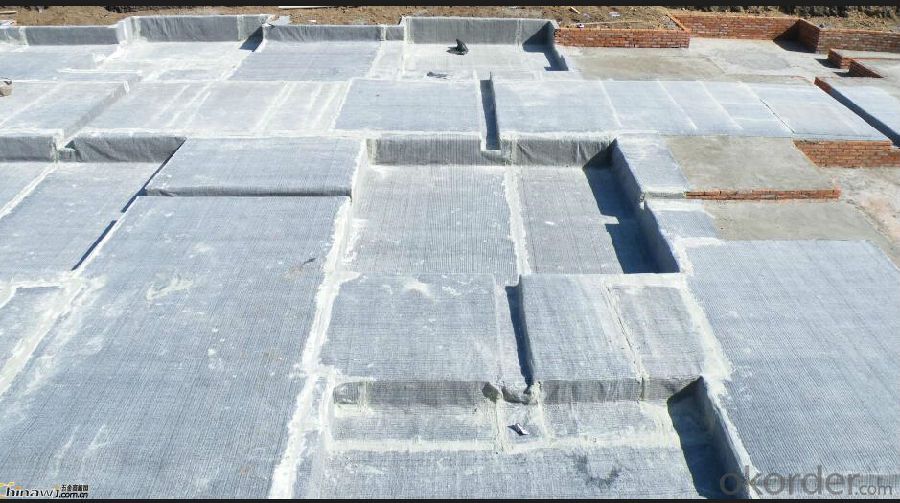
3,Application of GCL
Landfills | · Mud Pits |
· Lagoons | · Canals |
· Bund Lining | · Tank Lining |
· Fish Farm Lining | · Roof Lining |
· Waste Water Pits | · Ponds and Reservoirs |
· Dams | · Floating Covers |
· Vertical Cutoff Walls | · Hydraulic Structure |
· Basement Lining | · Drip Irrigation Ponds |
4, Technical Data of GCL
Inspection Item | Testing Procedure | Technical Index |
Bentonite mass for unit area | ASTMD5993 | ≥5.5kg/m2 |
Expansion coefficient | ASTMD5890 | ≥ 25mL/2g |
Low temperature ductility | ASTMD5898 | No impact at -35°C |
Thickness | ASTMD5892 | ≥6.4mm |
Tensile strength | ASTMD4632 | ≥5400N |
Peel strength of concrete face | ASTMD4632 | ≥3.0 KN/ m2 |
Peel strength | ASTMD4632 | ≥680N |
Indicated flow | ASTMD5887 | ≤1 × 10-8m3/m2/sec |
Hydrostatic pressure resistance | ASTMD5888 | ≥70 |
Permeability | ASTMD5887 | ≤5 × 10-11m/sec |
Extension rate | ASTMD5896 | ≥20 |
Puncture strength | ASTMD5894 | ≥635N |
FAQ:
How many quantity for one 20'' container?
About 5,000m2, 16rolls
What's your delivery time?
About 15-20days against deposit received
. What's your package?
Per roll with two pieces woven bag
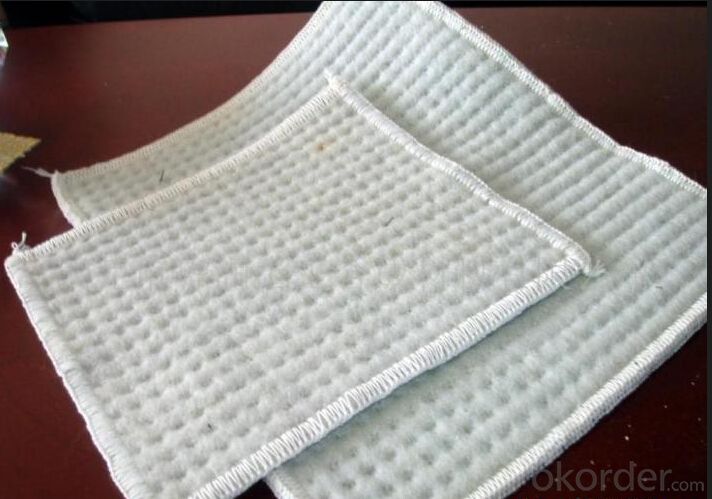
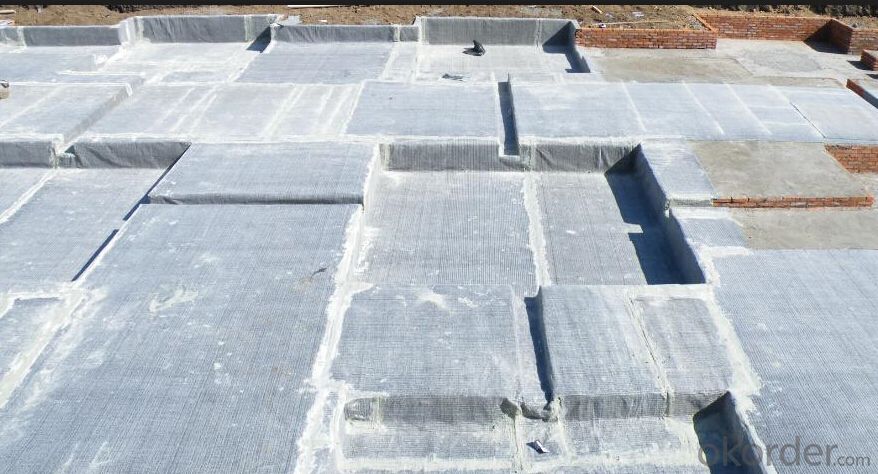
- Q: Can geosynthetics be used for lining canals and reservoirs?
- Yes, geosynthetics can be used for lining canals and reservoirs. Geosynthetics such as geomembranes and geotextiles are commonly used in civil engineering projects for their waterproofing and filtration properties. They can effectively prevent seepage and leakage in canals and reservoirs, ensuring water containment and conservation.
- Q: Are earthwork products suitable for foundation reinforcement?
- Yes, earthwork products such as geotextiles, geogrids, and geomembranes are commonly used for foundation reinforcement. These products provide stability, prevent soil erosion, and enhance the load-bearing capacity of the foundation. They are effective in improving the overall performance and durability of the foundation, making them suitable for reinforcement purposes.
- Q: Are earthwork products resistant to UV radiation?
- Yes, earthwork products are generally resistant to UV radiation.
- Q: Are earthwork products suitable for shoreline protection?
- Yes, earthwork products can be suitable for shoreline protection. They can be used to create berms, dunes, or other structures to help prevent erosion and protect the shoreline from wave action. These products offer stability and durability, making them an effective solution for shoreline protection in certain conditions.
- Q: What are the different installation guidelines for earthwork products?
- The installation guidelines for earthwork products may vary depending on the specific product being used. However, some general guidelines to consider include: 1. Preparing the site: Clear any vegetation, debris, or existing structures from the area where the earthwork product will be installed. 2. Excavation: Dig a trench or hole of the appropriate size and depth to accommodate the product. 3. Compaction: Compact the soil at the bottom of the excavation to provide a stable base for the earthwork product. 4. Placement: Carefully place the earthwork product into the excavation, ensuring it is properly aligned, level, and positioned according to the manufacturer's instructions. 5. Backfill: Fill the space around the product with select backfill material, compacting it in layers as necessary to provide stability and prevent settling. 6. Securing: If required, secure the earthwork product using appropriate fasteners or connectors as specified by the manufacturer. 7. Finishing: Complete any additional steps such as grading, compaction, or landscaping to ensure the earthwork product is properly integrated into the surrounding environment. It is crucial to consult the specific installation guidelines provided by the manufacturer for the earthwork product being used, as they may include additional or specific instructions for optimal installation.
- Q: What are the different installation techniques for earthwork products?
- There are several different installation techniques for earthwork products, depending on the specific product and the intended use. Some common techniques include excavation and grading, compaction, backfilling, and erosion control. Excavation and grading involve removing excess soil and shaping the land to the desired contours. Compaction involves using heavy machinery to compress the soil, making it more stable and able to support structures. Backfilling is the process of filling in excavated areas with soil or other materials to provide support and stability. Erosion control techniques, such as installing erosion control blankets or retaining walls, are used to prevent soil erosion and maintain the integrity of the earthwork.
- Q: What are the advantages of using geotextile bags in shoreline protection?
- Using geotextile bags in shoreline protection offers several advantages. Firstly, these bags are specifically designed to prevent erosion by acting as a barrier against water currents and wave action. They can be filled with a variety of materials such as sand or gravel, providing stability and protection to the shoreline. Additionally, geotextile bags are cost-effective compared to traditional hard structures like seawalls or revetments. They are easy to install and maintain, requiring minimal labor and equipment. Furthermore, these bags are flexible and can adapt to the natural contours of the shoreline, enhancing their effectiveness in protecting against erosion. Their permeable nature allows water to flow through, reducing the risk of scouring and improving water quality. Geotextile bags also provide habitat for various organisms, contributing to ecological preservation. Overall, using geotextile bags in shoreline protection offers a versatile, cost-effective, and environmentally friendly solution to combat erosion and preserve coastal areas.
- Q: How are geotextile mattresses used in earthwork?
- Geotextile mattresses are used in earthwork to provide erosion control, stabilize slopes, and protect soil from erosion caused by water flow. They are typically placed on the surface of slopes or embankments to prevent soil displacement and promote vegetation growth. These mattresses act as a barrier, allowing water to flow through while retaining the soil particles, thus reducing the risk of erosion and maintaining the stability of the earthwork.
- Q: What is the function of geosynthetic drainage materials in sports field drainage?
- The function of geosynthetic drainage materials in sports field drainage is to provide effective water drainage and prevent water accumulation on the playing surface. These materials are designed to allow water to flow freely through the drainage system, reducing the risk of waterlogged fields and promoting optimal playing conditions.
- Q: How do earthwork products contribute to wildlife habitat creation and restoration?
- Earthwork products such as berms, mounds, and wetlands can significantly contribute to wildlife habitat creation and restoration. These structures provide diverse microhabitats, offering food, shelter, and breeding grounds for various species. Berms and mounds create elevation changes and diverse topography, providing opportunities for different plant species to grow and attracting a wide range of animals. Wetlands act as natural filters, improving water quality and providing habitats for amphibians, waterfowl, and other aquatic species. Overall, earthwork products play a crucial role in enhancing biodiversity and promoting the overall health of wildlife habitats.
Send your message to us
Pond Liner Geosynthetic Clay Liner for Golf Course
- Loading Port:
- Qingdao
- Payment Terms:
- TT OR LC
- Min Order Qty:
- 5000 m²
- Supply Capability:
- 100000 m²/month
OKorder Service Pledge
OKorder Financial Service
Similar products
Hot products
Hot Searches
Related keywords
